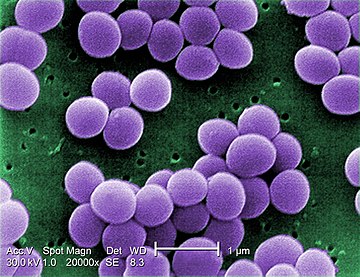Você sabia?
Você pode clicar duas vezes em uma palavra para procurá-la na TermGallery.
Você pode clicar duas vezes em uma palavra para procurá-la na TermGallery.
Significados de s. aureus em inglês

Uso de s. aureus em inglês
1
Conclusion: Sodium heparin lacked antibacterial activity against S. aureus causing catheter-related infections.
2
S. aureus is known to induce type 2 cytokine release via enterotoxins.
3
A biofilm-negative phase-variant S. aureus strain was detected from 6 strains tested.
4
In the absence of loricrin, S. aureus nasal colonisation was significantly impaired.
5
The antibiofilm properties of ScpA were conserved across S. aureus strain lineages.
6
The predominant S. aureus CCs among dog and cat isolates were similar.
7
Conclusions: The EEFIC clone was relatively highly prevalent among the isolated S. aureus.
8
Furthermore, passive protection also reduced mortality in a murine S. aureus peritonitis model.
9
Extensive variation in genome content exists among S. aureus pathogenic clones.
10
Furthermore, S. aureus populations are able to acquire and lose antimicrobial resistance genes.
11
The S. aureus beta-lactams resistance was investigated using a phenotypic and genotypic approach.
12
Finally, we confirm S. aureus infection of osteocytes in clinical cases of PJI.
13
Therefore, we hypothesized that apoB48 would be sufficient to antagonize S. aureus QS.
14
Eighty-two per cent of livestock-associated S. aureus demonstrated resistance to tetracycline.
15
Conclusions: We detected S. aureus and MRSA in both human and canine specimens.
16
Ten workers were persistent and six were intermittent carriers of livestock-associated S. aureus.
Translations for s. aureus

